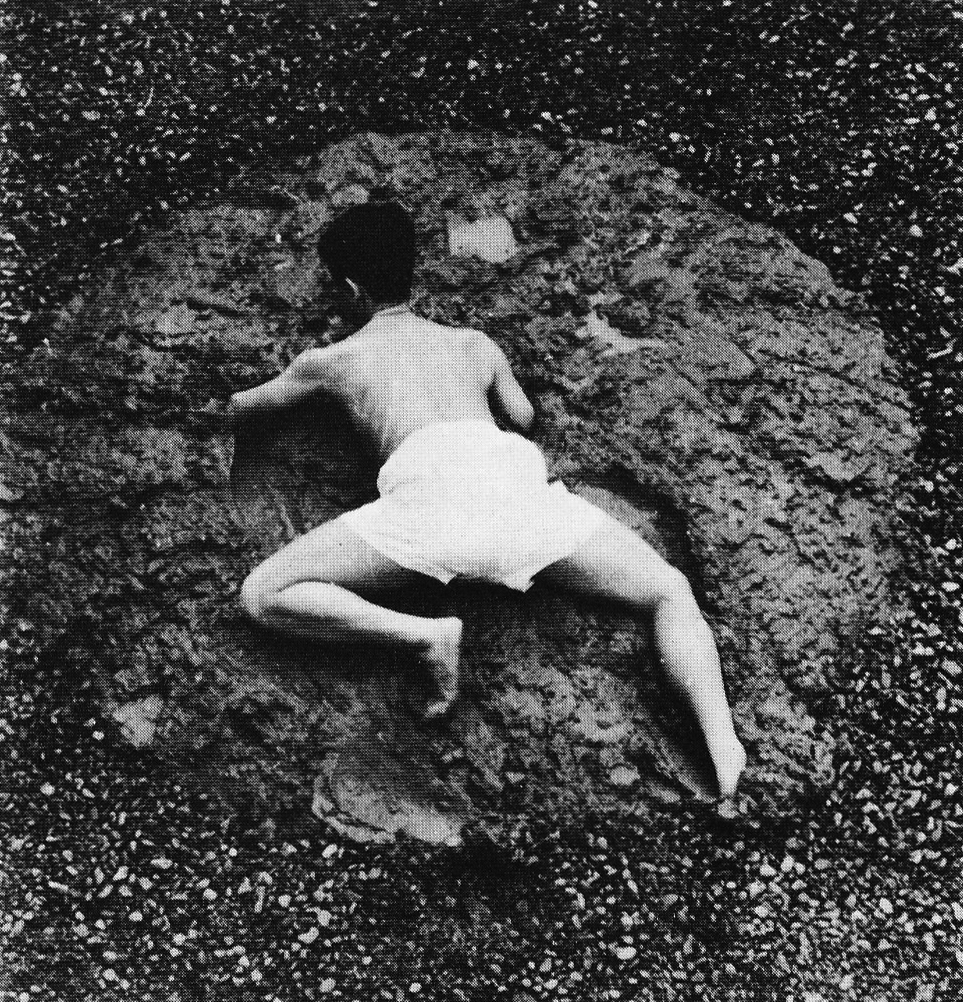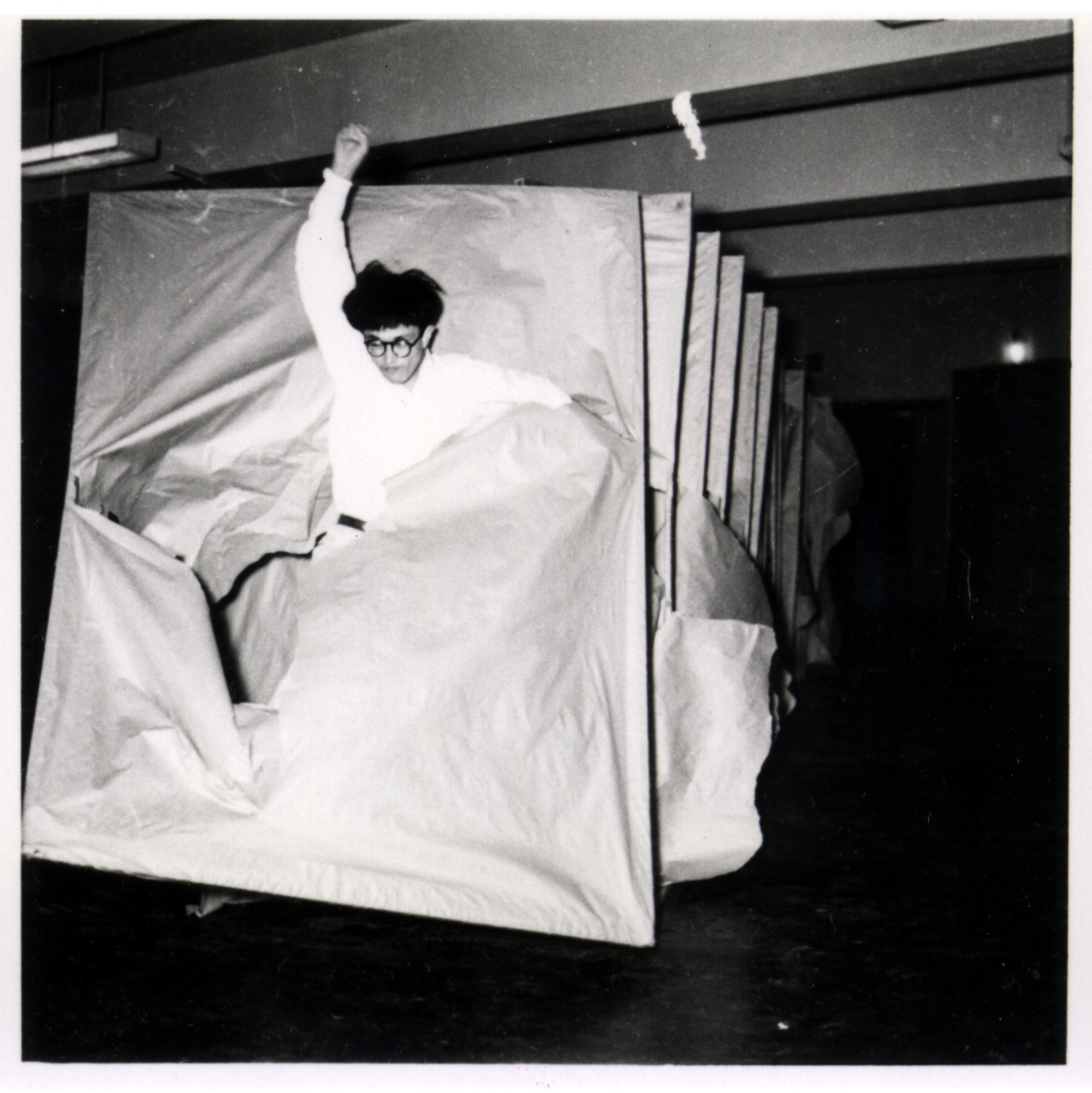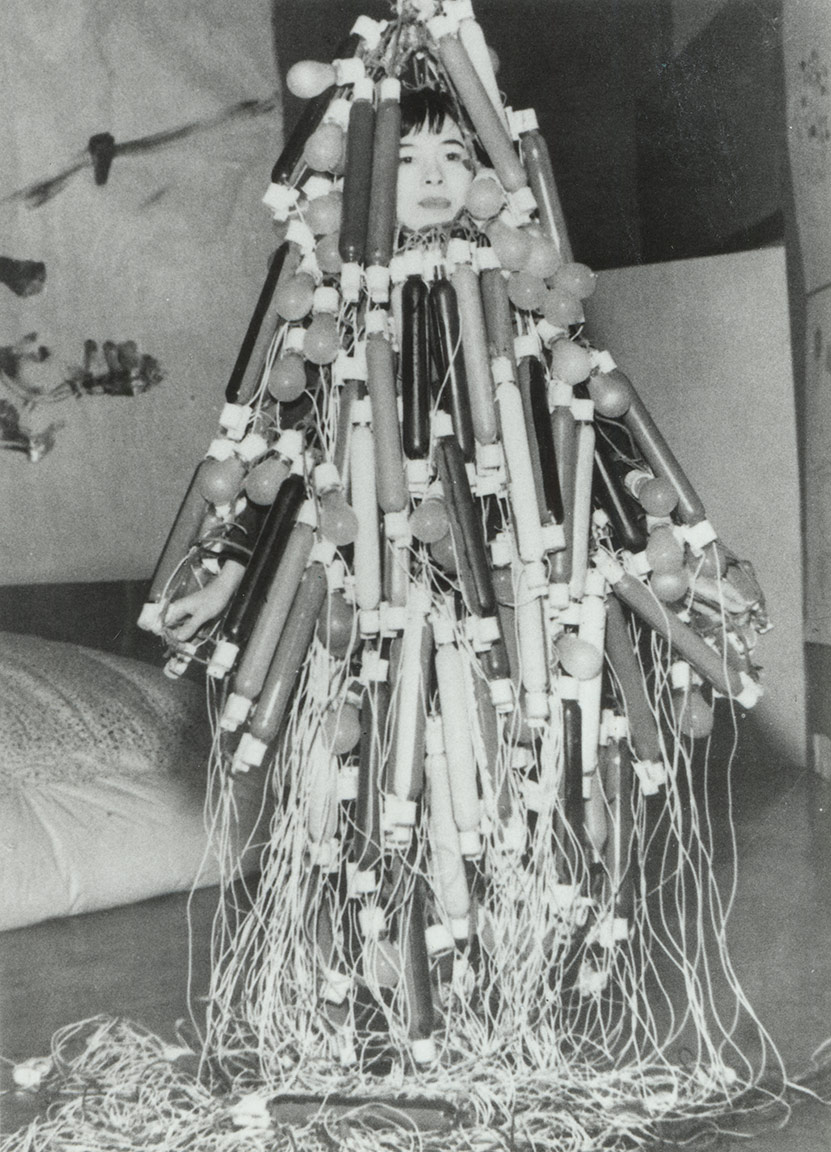The Japanese Collective That Foretold The Art Of The 60s
By Something CuratedThe Gutai Art Association, also known as Gutai, emerged in 1954 in Ashiya, Japan, helmed by painter, curator, educator and businessman, Jirō Yoshihara. This avant-garde group mainly consisted of young artists from the Hanshin region. Today, Gutai is internationally recognised as one of the most prominent 20th-century art collectives, having produced a string of dynamic and challenging works that have had a lasting impact on the art world. The group became renowned for its innovative approach, seamlessly blending various experimental art forms; their repertoire includes painting combined with performance, conceptual art, interactive installations and site-specific works. The core focus of Gutai’s output involved exploring the connection between the human spirit, body, and materials. This often manifested in an artistic language that incorporated the artist’s body enacting expressive and theatrical gestures, frequently showcased in public parks and on stage.

A number of radical works were created by members of the collective during the 1950s – now a seminal part of art history. Kazuo Shiraga’s 1955 “performance painting” involved him flinging himself half-nude into a clay pile, shaping it with his body. Challenging Mud explored the collision of physical action and the clay’s materiality. The mud pile remained as an artwork after the performance. A year later, in 1956, Saburo Murakami’s Passing Through saw the artist propel himself through a sequence of vast paper screens. With each forceful punch, the tightly stretched paper produced resounding, explosive sounds, while Murakami swiftly moved through the sheets, embracing and celebrating their material characteristics. This artwork exemplified the Gutai artists’ aspiration to transcend the conventional confines of the canvas, pursuing connections between the human spirit and the essence of matter itself.

The same year, Atsuko Tanaka created Electric Dress. An impressive costume, the work comprised incandescent light bulbs painted in vibrant red, green, yellow, and blue. Tanaka drew inspiration from the neon-lit Japanese cityscapes of the 1950s, becoming one of the pioneering Gutai artists to integrate contemporary technology with art. This wearable piece was intended for performing, and its unique, and a little bit worrying, feature was the ability to administer small electric shocks to the wearer, providing an immediate and unmediated experience of the light bulbs’ properties. In 1957, Akira Kanayama unveiled Work, in which he utilised tubes of paint and felt-tip pens attached to a remote-controlled toy car. Through this creative approach, he established his distinctive form of action painting, paying a direct tribute to the influential legacy of Abstract Expressionism.

Encouraged by Yoshihara’s ambitious vision, strategic awareness, and a global perspective, Gutai successfully reached audiences worldwide through its exhibitions and publications, establishing what Yoshihara referred to as an “international common ground” in the art world. The group engaged in fruitful exchanges and collaborations with numerous artists, art critics, and curators from Europe, the United States, and South Africa. Some of the prominent figures Gutai interacted with included the French art critic Michel Tapié, who promoted several now eminent artists; art dealers Martha Jackson in New York and Rodolphe Stadler in Paris; the Dutch artist group Nul; the German artist group Zero; and individuals like John Cage, Christo Coetzee, Merce Cunningham, Paul Jenkins, Ray Johnson, Isamu Noguchi, and Robert Rauschenberg. Until its disbandment in 1972 after Yoshihara’s passing, approximately 60 artists were actively engaged as members of the group.

Yoshihara, as a driving force, continuously motivated his peers with the mantra, “Create what has never been done before!” His proposition of unorthodox exhibition formats served as a catalyst for the birth of profoundly innovative artworks that surpassed traditional boundaries of artistic genres. Gutai’s creations have been widely acknowledged for their foresight in anticipating ideas and approaches that became prominent in European and American art during the 1960s. These included performance art, happenings, minimalism, conceptual art, environmental art, and land art. The Japanese group’s revolutionary works undoubtedly contributed to shaping the development of these artistic movements across the globe, and their powerful output and philosophies continue to inspire and influence diverse contemporary practices today.
Feature image: Tanaka Atsuko, Electric Dress, 1956. © Tanaka Atsuko / Gutai Art Association